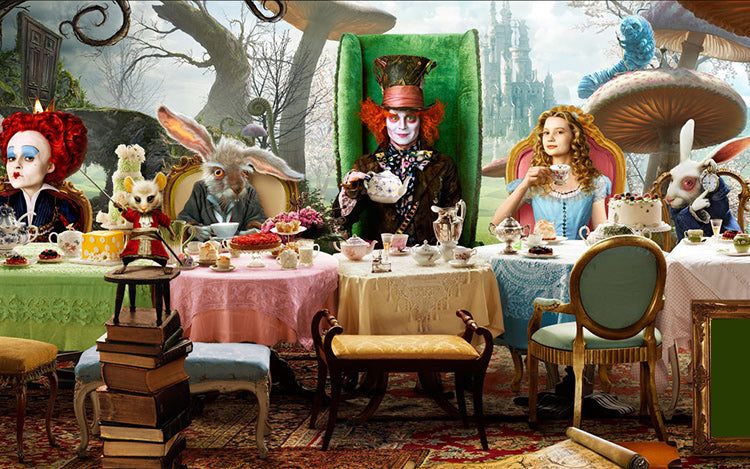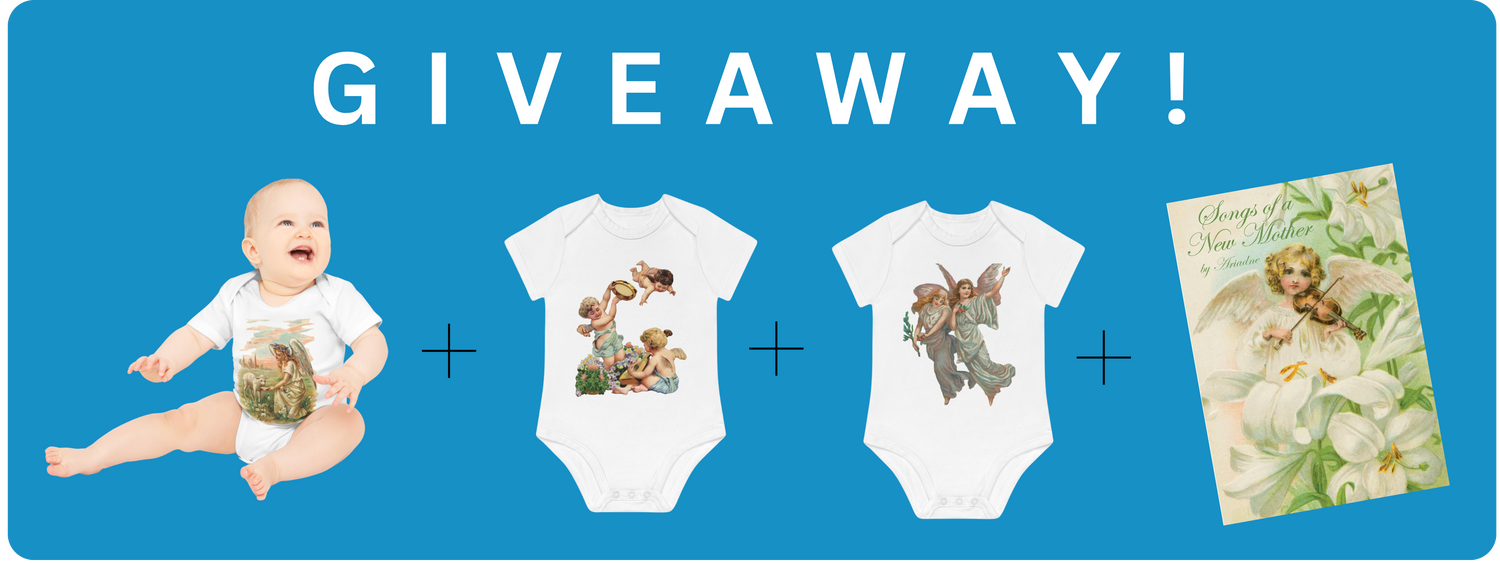
Alice In Wonderland

The Victorian Era was a creative time for humankind and taught us how to open our minds and expand our horizons. The nineteenth century included great thinkers, transcendentalists, mystics, saints, writers, artists, psychologists, philosophers and educators. Women began to assert their rights and even threw off their corsets and rode bicycles wearing bloomers! The Victorians gave children their childhood wonder back by stopping child labor and beginning compulsory education. Children’s stories began to be written. Fairy tales, folk tales and adventure stories became part of our culture. Victorian literature sprang out of the classical and medieval literature of England, such as stories of King Arthur and Greek mythology. The Victorian era brought about a respect for science and botany with Charles Darwin’s “On the Origin of Species”. His highly influential theory of evolution shook the Victorian world out of it’s shell into the wide open universe.
Among the Victorian Era writers, Lewis Carroll is an example of a highly creative mind that opened up a whole new world for us. In his books, Alice in Wonderland and Through the Looking Glass, bewildering philosophy was put into a form that even a child could understand. He was a photographer, especially of children, and invented puzzles and games to entertain his subjects. He was extremely interested in faery lore, and what wonderful images he created in the minds of the children to make them smile! He was the king of a whimsical world of fantasy interwoven with logic, a master storyteller and full of wit. Carroll lived a multifaceted life, not only as a photographer and inventor, but as a novelist, logician, mathematician, and Anglican deacon. His musical word play is full of under lying meaning, sometimes entering the world of profound philosophy. He made fiction seem like a reality. He used imagination, like many of the great artists and inventors, to inspire us to open up our minds to a place outside of our own limitations.
Alice is each and every one of us, traveling through levels of consciousness in a dream-like world to discover who we really are. We follow her through the mirror into the mists of neither here nor there, and wonder about the puzzling philosophical questions that come with the journey. In the dream that is Alice’s Wonderland we see a level of consciousness not seen in the ordinary waking hours of limited thinking, and it is indeed an awakening that is the ultimate destination. In the escape of a dream our imagination craves to give us a glimpse into our real nature and the unlimited realm of all possibilities. Once we enter into the misty time and space of a dream, and experience the power of imagination, we see that we are much more fluid than our physical body, that we can become what we observe and think about. When we dream, our minds see an entirely different world than the physical world. The mind alone is the seer of the dream where the entire universe is like a city shining in the mirror of our consciousness.
One of Alice’s discoveries is the idea that life is like a huge chess game being played all over the world. Its goal is to reach the eighth square, where the player may choose to become Queen. This means a transformation into total freedom, the freedom to move on the board in any direction. Alice must begin her game as a Pawn. We can almost hear the classic question, Are we not all pawns, the playthings of the gods? And a pawn she must remain, advancing step by step until the goal is reached. However, in this chess game there are some peculiar rules. As in our life too, when we have to break the patterns of old habits, Alice must sometimes retrace her steps in order to move ahead. Appropriately it is the Red Queen, a kind of governess-figure, who introduces her to this chessboard of life. Alice learns to have courage and to persistently go after her heart’s desire. She is determined to play by the rules, win the chess game of life, and become the queen of her dreams where she has full vision and “wakes up” to her role. Alice learns that her true purpose is to bring an end to the fear and suffering of others, even though when she sought kindness and understanding from others along the way, she was frequently disappointed. In spite of that, Alice learns to help herself so that she can be strong enough to help those who are less fortunate with the compassion of a true queen of the people’s hearts.
We must consider what a long way we have come in our lives. “Consider what o’clock it is! Consider anything, only don’t cry!” says the Queen. Can the Queen prevent crying by considering things? “That’s the way it’s done,” the Queen replies, “nobody can do two things at once, you know.” When we take a deep look at what Carroll was getting at with this silly conversation, we see that it is the practice of mind over matter, and a choice of what thoughts to focus on. We can certainly alter the mood and disposition of our mind if we understand that we are not our minds, but something much greater that transcends beyond what is seen with our physical eyes. The mind is an instrument, and when we find negative and fearful thoughts rising in it, we can transform our mental energy if we only train ourselves to do so. The White Queen practiced believing impossible things for half-an-hour a day. “Why, sometimes I’ve believed as many as six impossible things before breakfast!” she says.
We can all spend a little time every morning believing in our hearts what seems to be impossible. Every morning a person can quietly look for answers to the questions: who am I, what is life, and what is real? All may seem impossible to grasp at first, but with practice, clarity of mind, and grace from above, we will realize the truth of the wonderland of the transcendent realm where all things are possible. When the caterpillar asks Alice who she is, at first Alice is confused, but the caterpillar explains that it is really not confusing at all. Then Alice wonders about this deep philosophical question. We must each ask ourselves, “Who am I?” to find our true nature. If we just ponder this great question of humanity, we will eventually come to see ourselves as a spark of the divine with unlimited potential. “Remember who you are!” said the Red Queen. But the Red Queen also said, “Off with her head, off with her head!” As in death, the ego must be lost and the mind expanded to become one with the universe. We must lose our heads and leave our egos behind. This will break down the barriers of reality. When the mind is gone, we become free and happy. We must learn how to disolve the mind and the ego to experience the unity conciousness and oneness with the universe. This is the unlimited realm of all possibilities. We must train the mind and the ego to be unrestricted and have faith that all possibllities exist in the unlimited realm of expanded awareness and imagination. Even Einstein said, “Imagination is everything.” We must free our spirits to go from what is near (being self absorbed), to what is far (to being one with the whole universe). We only experience the content of our minds. We cannot really know our true nature, just as we can not grasp the flow of water. We can only experience it. We are not the mind, the memory, the I, or the ego. The witness of it all is the True Self.
May we all be like Alice and eventually learn that our thoughts create our reality, and that words can become things, so we must be very careful about how we think and what we say. We must be the master of our thoughts and words, and be discriminating in what we allow into our minds. “When you’ve once said a thing,” the Red Queen declares, “that fixes it and you must take the consequences.” The spoken word molds the manifested reality, so we must learn to allow our True Self to govern our words. Alice needed to learn the lesson of controlling her mind. “You can’t think of two things at once.” We must all learn the power of focus and the importance of controlling what occupies our mind, and just usher out the unwelcome guests that inevitably invite themselves into our sacred space. When these lessons are learned, a better reality can be created. All the various images in the mirror are really just reflections of one reality that has been painted in different ways by our imagination. So let us paint a perfect picture in our minds.
Ariadne


